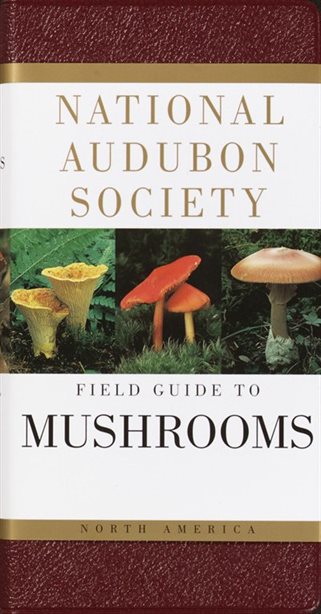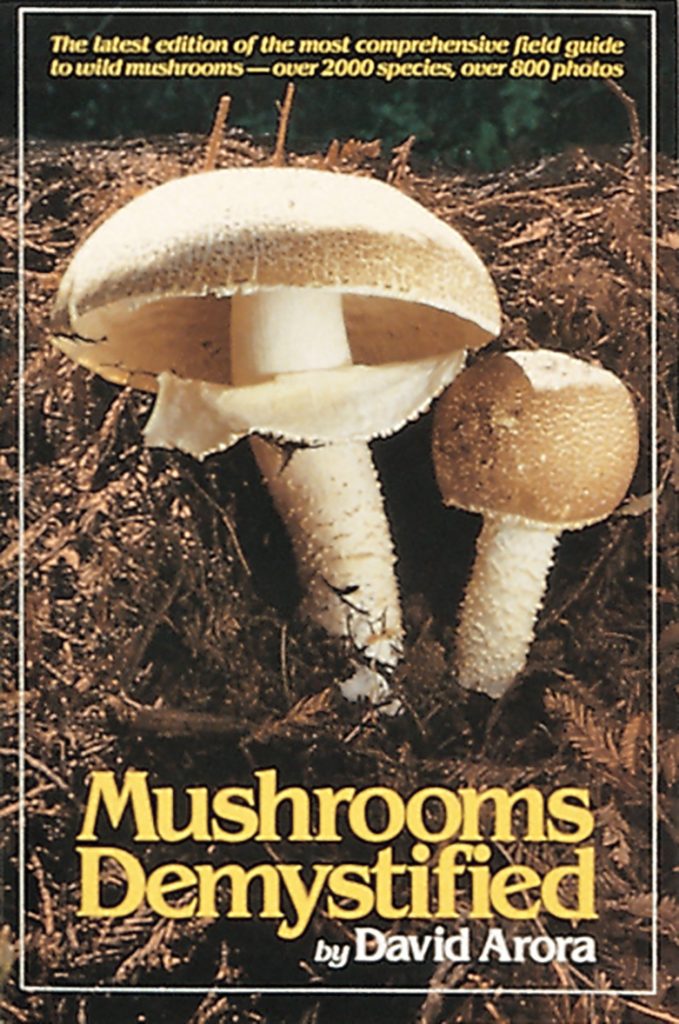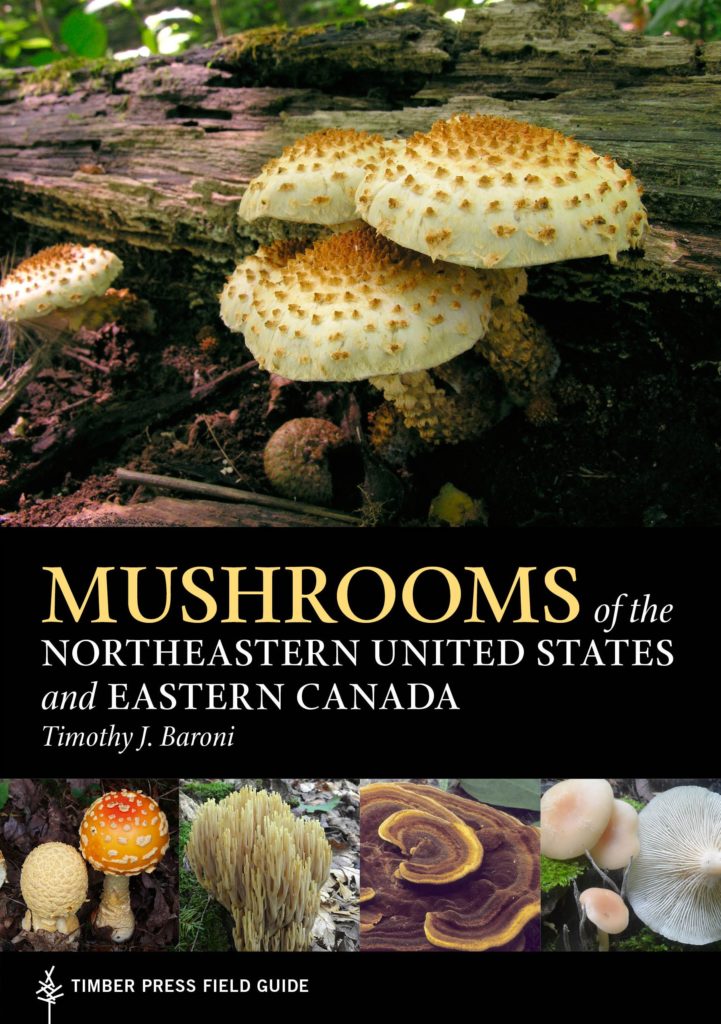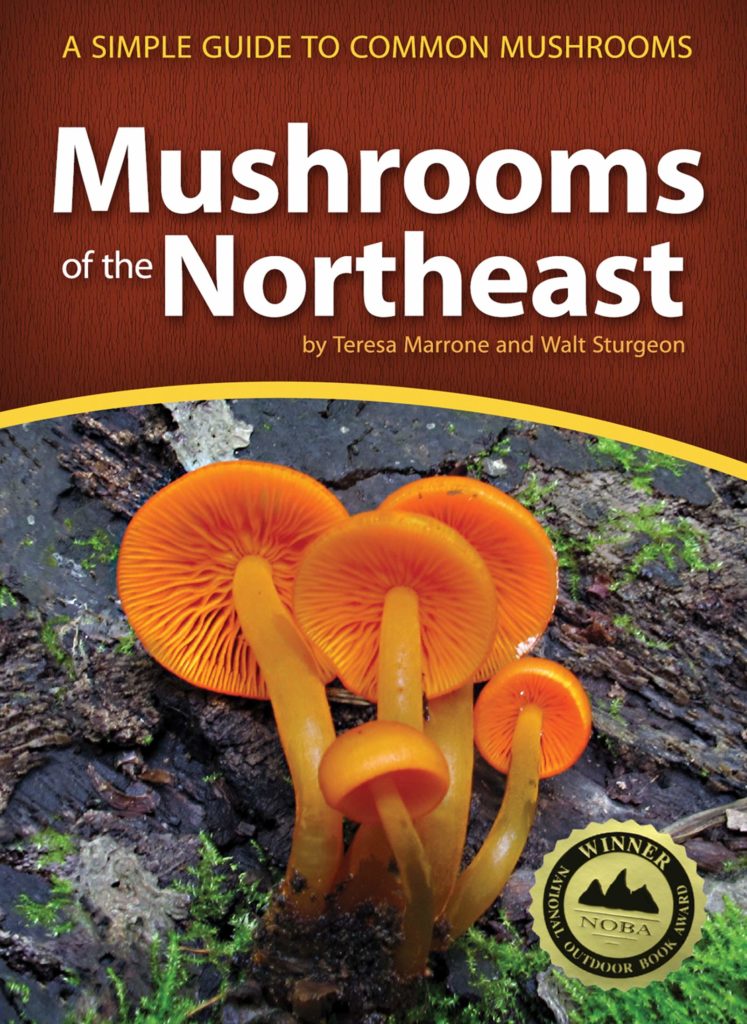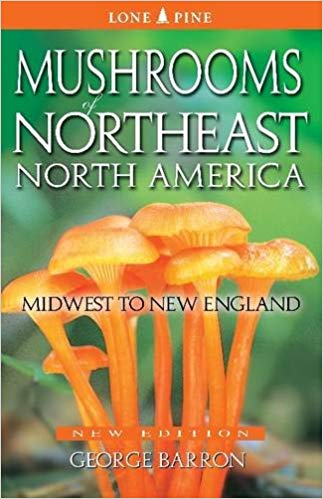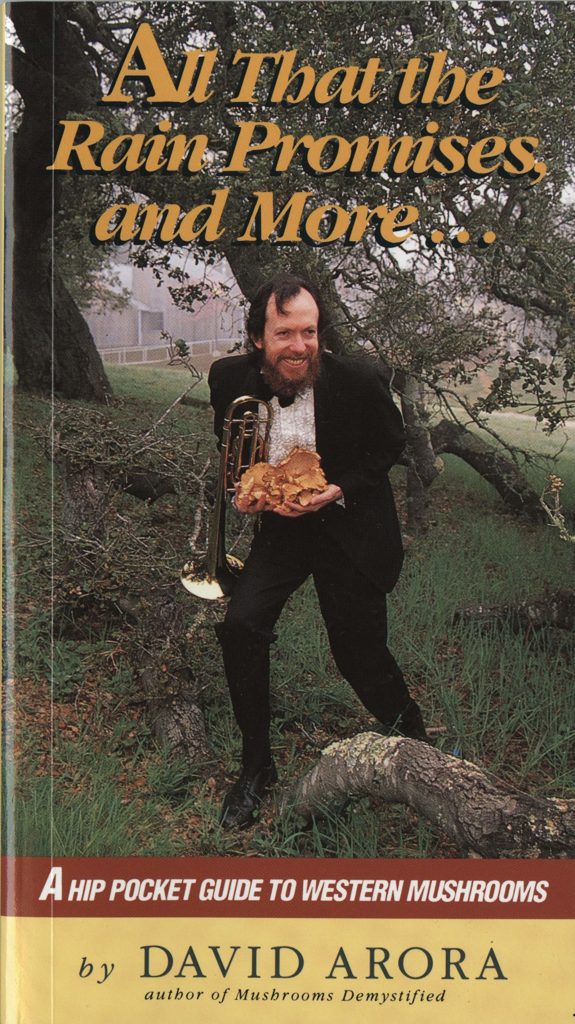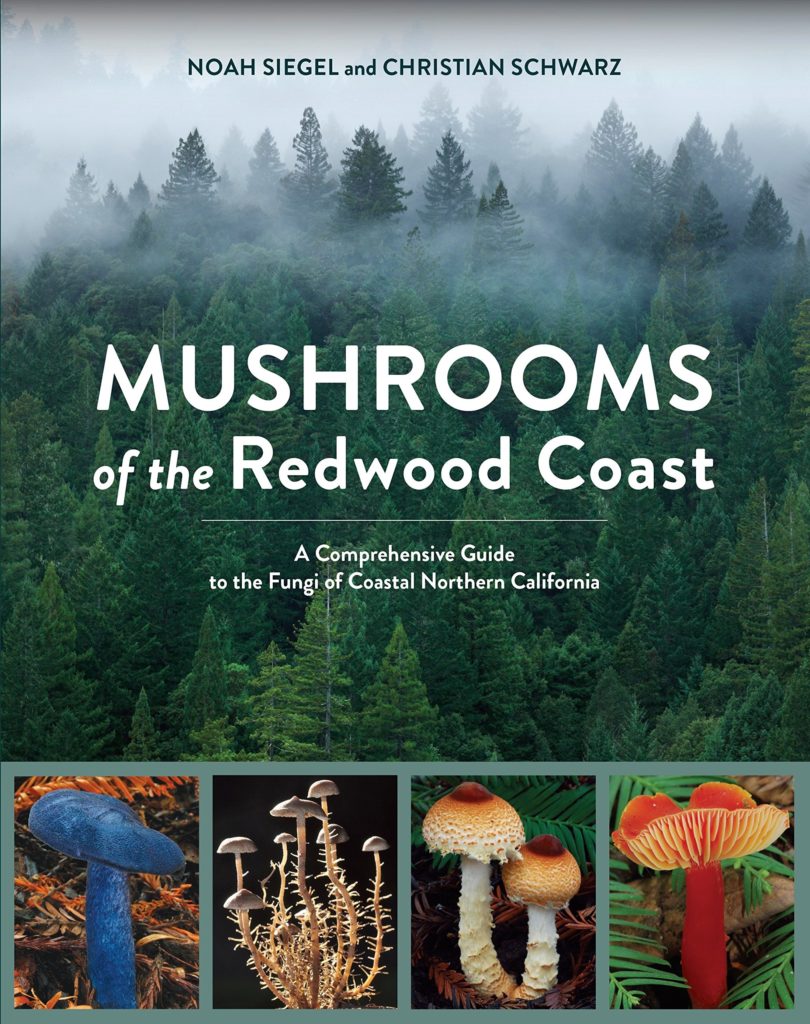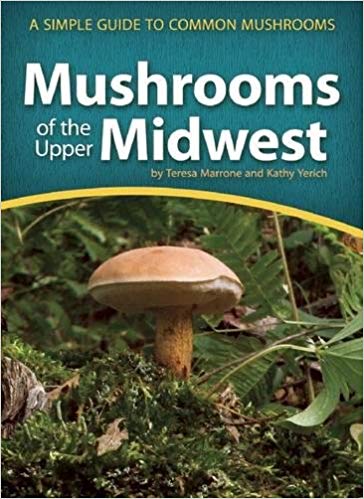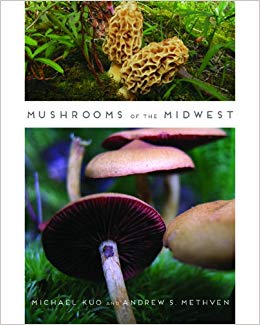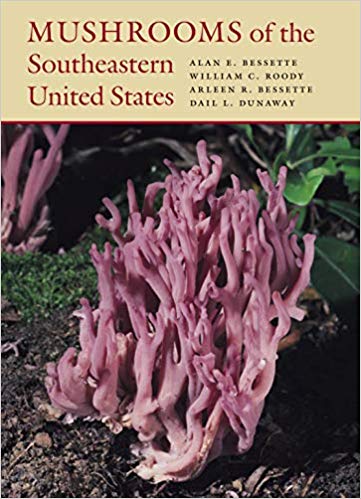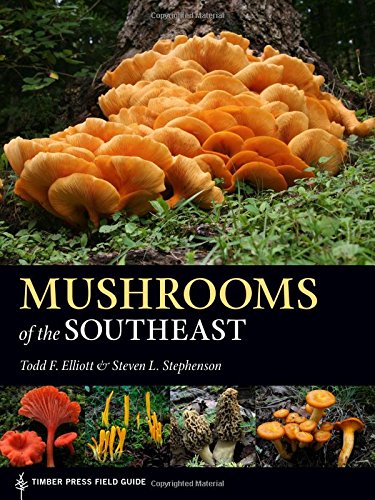Foraging for, collecting, or simply learning about mushrooms is a fascinating and engaging hobby for a great many people. For some, expertise in fungi is the basis of entire careers. It all begins with learning to identify mushrooms, and while the help of an in-person teacher is invaluable (especially for those who intend to eat their finds), most people begin with field guides. Books also add depth and breadth to the knowledge of intermediate or advanced students and enthusiasts.
Here is a list of some of the best books on identifying North American mushrooms, broken down by region. Note that definitions of regions vary, and that two books with the same word in their title (“Northeast,” for example) might actually cover very different areas. Readers should make certain a book actually covers their home area before making the plunge.
North America (Including Canada)
National Audubon Society Field Guide to North American Mushrooms
By Gary Lincoff
This title is a best-seller in the mushroom-hunting world, and for good reason. It crams a reasonably comprehensive introduction to a whole continent’s fungi into a small (literally pocket-sized), attractive package. The color pictures are stunning, and the descriptions of mushroom anatomy and reproduction, and of the various families, make a good introduction to the subject for interested beginners.
Unfortunately, some readers find the book’s organization counter-intuitive or cumbersome, making its use for ID in the field difficult, and some editions have a few problematic errors. And while this book includes over 700 species, in attempting to cover an entire continent, it must inevitably leave out many species.
In any type of natural history study, the biggest hurdle for newcomers is likely simply learning to see—sensitizing the mind to the types of detail that are relevant to a given subject. The National Audubon Society Guide earns its popularity not as a go-to source for identifying every fungus in North America, but as a means of teaching beginners what to look for as they explore the world of mushrooms. You can buy it here.
Mushrooms Demystified
By David Arora
This classic book is often called the “mushroom Bible,” as it covers over 1000 species and its meticulous yet intuitive structure makes keying out even difficult species a breeze. Plus, far from being dry or heavy, the text is actually quite funny.
It is not a book for beginners, who may have trouble with the professional-style key and all the scientific names. The pictures are black-and-white and not intended to be much help with identification. It’s also a bit too big and heavy to be a true field guide; the better bet is to collect mushrooms for identification with the book back at camp or at home. But for intermediate or advanced mushroom hunters, especially those hunting in California (the author focuses on his home state), Mushrooms Demystified is a must-have. You can buy it here.
Eastern USA
Mushrooms of the Northeastern United States and Eastern Canada
By Timothy J. Baroni
Timothy Barony’s book is an excellent introductory text for the Northeastern region, with big, beautiful full-color pictures, and a clear description of the different groups of fungi. It is not a field guide; not only is it a bit too big, but the primary identifying feature used is spore print color, and getting a spore print requires a collected sample and a wait of at least several hours. It is also not a text designed for foragers, as the species accounts often don’t address edibility at all or do so only in passing. But as the author notes in his introduction, the best reason to study fungi is not that they are delicious (though some are) but that they are fascinating. For enthusiasts in the Northeast who want an accessible but scientifically serious text, this could be it. You can buy it here.
Mushrooms of the Northeast: A Simple Guide to Common Mushrooms
By Teresa Marrone and Walt Sturgeon
Mushrooms of the Northeast is a field guide. It’s tiny (about the size of two packs of cards) and written in a clear, accessible style that minimizes technical terms but delivers a lot of information. The accounts of more than 400 species are organized first by mushroom shape, then by color, so readers don’t have to know anything about mushrooms in order to start using the book. Special sections on both edibles and toxics are an advantage for would-be foragers, but there is no at-a-glance listing to make eating easy—which is probably a good thing. You can buy it here.
Mushrooms of Northeast North America: Midwest to New England
By George Barron
George Barron’s book is a good introductory text that’s small enough to function as a field guide—although the section on gilled mushrooms is organized by spore print, meaning readers have to collect a specimen and wait a day in order to begin the identification process. The structure of the book does make it easy for beginners to familiarize themselves with the major types of mushrooms and to learn what details to look for, making it a good choice for those who want a basic orientation in fungi. And with 700 color photos, the book is gorgeous and an inspiration to up-and-coming mushroom photographers. You can buy it here.
Western US
All That the Rain Promises and More: A Hip Pocket Guide to Western Mushrooms
By David Arora
The title and the front cover (which features a rather gnomish-looking man inexplicably holding a wild mushroom and a trumpet) suggest mushroom-themed flights of fancy, but the book is much better described as a simple, extremely practical, beginner’s guide. Not that the text is at all dry!
David Arora avoids technical terms and extraneous detail and uses an intuitive, picture-based identification system designed for use by newbies. In order to keep the book pocket-sized, he has included only a relatively small number of species, but these are enough to whet the apatite of potential mycophiles and communicate the basics of what might become a lifelong hobby. Besides sections on edibility and toxicity (Arora recommends learning the few truly dangerous species first), there are also short, introductory essays on the traditional use of mushrooms for medicine, as hallucinogenics, and for making dyes. All that the rains promises and more is a classic, and an understandable favorite among enthusiasts. You can buy it here.
Mushrooms of the Redwood Coast: A Comprehensive Guide to the Fungi of Coastal Northern California
By Noah Siegal and Christian Schwarz
The premise of Siegel and Schwarz’s book is a bit unusual, since it focuses on the fungi of a single, narrowly-defined bioregion (the range of the coastal redwood) and provides brief introductions for many of the tree species typical of that region. This attention to more than mushrooms recognizes that fungi never grow alone, and that understanding them begins with knowing something of their ecological context. Many of the species covered also live outside redwood country, so readers throughout the Pacific Northwest can use the book.
The book is a little large for use as a field guide, and some readers find the key system a little counter-intuitive, but the “comprehensive” in the title is quite accurate. 750 species are covered in depth, and hundreds more receive brief mention, plus there is detailed information on taxonomy, ecology, edibility, and toxicity. Considered a “must have” for many West Coast mushroom enthusiasts. You can buy it here.
Mushrooms of the Pacific Northwest
By Steve Trudell and Joe Ammirati
Trudell and Ammirati’s book uses gorgeous, high-quality photographs, clear text, and a logical key system to explore 460 mushroom species, including many that are not covered in any other field guide. Some readers may be put off by the fact that most species are listed only by their scientific names and there is virtually no information on which species are edible. However, many mushroom species have no common name in English, and the authors have simply chosen not to invent “common” names where none currently exist. As to edibility, many experts recommend not relying on a single book for foraging anyway. This text does include a section in the back discussing the various types of mushroom toxins, what symptoms they cause, and how the toxins cause damage in the body (if that information is known). Such detail is much easier to remember than vague edibility ratings, and will leave would-be foragers in much better shape to use the lists of edibles they find in other books. You can buy it here.
Midwestern US
Mushrooms of the Upper Midwest: A Simple Guide to Common Mushrooms
By Teresa Marrone and Kathy Yerich
Mushrooms of the Upper Midwest is a small, pocket-sized guide for beginners that describes almost 400 mushroom species, including virtually all of the common species most enthusiasts ever see. The simple look-up system does not require a spore print, though spore print color is included in the description, making is a great book to carry into the field for quick IDs without having to collect one of everything the reader is curious about. Basic information on edibility and toxicity is included. The authors attempt to protect inexperienced readers by omitting or listing as inedible a number of species that are too easily confused with toxic species; whether such protection is a perk or a drawback is up to the reader. This book makes a great introduction for beginner enthusiasts living in the Upper Midwest. You can buy it here.
Mushrooms of the Midwest
By Michael Kuo and Andrew S. Methven
This book features an excellent key system, clear and in-depth coverage of over 500 mushroom species, and plenty of encouragement for the amateur who wishes to make a real contribution to mycology. While the book can work as a field guide—it is largish, but not too large—and is suitable for beginners, its focus is more scholarly than that of most introductory texts. The descriptions include microscopic features, and there is a section exploring the use of microscopes in mycology. The authors also discuss current taxonomy, the impact of DNA studies on the world of mycology, and the ecology of mushrooms. There is also a section of how to make, document, and preserve scientific-quality mushroom collections. It is not often that a single book can meet the needs of both beginners and experts. You can buy it here.
Southern US
Mushrooms of the Southeastern United States
By Alan Bessette, William C. Roody, Arleen Besset, and Dail Dunaway
This one is not a field guide. It is too large, and it is available only in a hardcover format. Instead, it is a professional-quality regionally-specific reference book, one that pairs well with a field guide as a means of double-checking ID or deepening an enthusiast’s understanding. The book covers 450 species, some of which have not been covered in any similar work, and is designed to work in conjunction with its sibling volume, Mushrooms of Northeastern North America. Because the ranges of individual mushroom species don’t always fit neatly into well-defined regions, there are some species that extent into the Southeast but are only covered in the sibling volume, and vice versa.
This reference is designed to be accessible for beginners, so it lacks a dichotomous key, except at the level of the major groups; readers must simply look through the accounts in a given group to find the one that matches a given specimen. The focus is on features visible with the naked eye, though the descriptions include microscopic features as well. But advanced students and experts will still find a thoroughness and a level of detail that make the book well worth its somewhat high price. The pictures, too, are gorgeous. You can buy it here.
Mushrooms of the Southeast
By Todd F. Elliott and Steven L. Stephenson
Mushrooms of the Southeast covers 330 species and includes comparative notes on over 1000 species in a compact (field-guide size!), fully-illustrated book with an easy-to-use key. Some readers might be frustrated by all of the information on look-alikes, as the notes can call into question IDs that seemed clear. However, for foragers especially it is better to be uncertain than to be certain—and wrong.
The book contains the same introductory material as many other mushroom guides, such as the anatomy of fungi, but also dives into other subjects; there is a whole section on fungi that attack, kill, and then grow their fruiting bodies from insects and spiders—the Southeast is distinctive for having many members of this otherwise rare group. An interesting perk is the essay introducing readers to the Southeast region, including as it does information on topography, geology, and ecology. You can buy it here.


